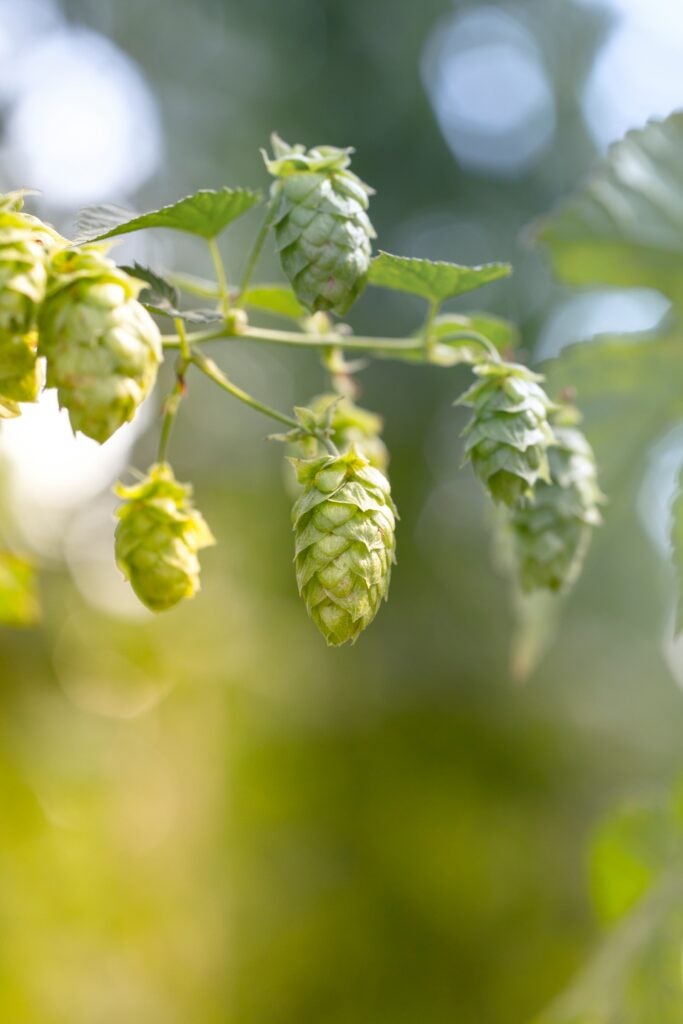Terpenes are a hugely exciting part of the cannabis industry, and now, labs are even testing terpene profiles in controlled environments. This is all very new and exciting, but we’ve been talking about terps for a while.
So, what is a terpene exactly, and why should you care?
Terpenes are responsible for the aromas and flavours of many plants, including cannabis (and even some insects!). Classified as organic compounds, terpenes come in many different varieties. Do you like the smell of lavender, mint, herbs, oranges, or pine? You can thank terpenes for that!
And now that we’re lab testing cannabis strains in order to map out their terpene profiles, we can begin to record, predict, and isolate the terpenes to get the exact flavours we want.
While the influence of terpenes on smell and flavour is already pretty cool, it’s not even the most exciting part about terpene research!
Some terpenes even have medicinal benefits. That means, in addition to the cannabinoids like THC and CBD, there are even more compounds in cannabis that can help with an array of medical conditions.
Myrcene
Myrcene, specifically β-myrcene, is a monoterpene and the most common terpene produced by cannabis (some varieties contain up to 60% of the essential oil). Its aroma has been described as musky, earthy, herbal – akin to cloves. A high myrcene level in cannabis (usually above 0.5%) results in the well-known “couch-lock” effect of classic Indica strains. Myrcene is found in oil of hops, citrus fruits, bay leaves, eucalyptus, wild thyme, lemongrass and many other plants.
Myrcene has some very special medicinal properties, including lowering the resistance across the blood to brain barrier, allowing itself and many other chemicals to cross the barrier easier and more quickly. In the case of cannabinoids (like THC), myrcene allows the effects of the cannabinoid to take effect more quickly. More uniquely still, myrcene has been shown to increase the maximum saturation level of the CB1 receptor, allowing for a greater maximum psychoactive effect.
Myrcene is a potent analgesic, anti-inflammatory, antibiotic and antimutagenic. It blocks the action of cytochrome, aflatoxin B and other pro-mutagenic carcinogens. The Bonamin et al study focused on the role of β-myrcene in preventing peptic ulcer disease. The study revealed that β-myrcene acts as an inhibitor of gastric and duodenal ulcers, suggesting it may be helpful in preventing peptic ulcer disease. Its sedative and relaxing effects also make it ideal for the treatment of insomnia and pain.
Since myrcene is normally found in essential oil from citrus fruit, many claims eating a fresh mango about 45 minutes before consuming cannabis will result in a faster onset of psycho activity and greater intensity. Be sure to choose a mango that is ripe otherwise the myrcene level will be too low to make a difference.
Pinene
Pinene is a bicyclic monoterpenoid. Akin to its name, pinene has distinctive aromas of pine and fir. There are two structural isomers of pinene found in nature: α-pinene and β-pinene. Both forms are important components of pine resin. α-pinene is the most widely encountered terpenoid in nature. Pinene is found in many other conifers, as well as in non-coniferous plants. It is found mostly in balsamic resin, pine woods and some citrus fruits. The two isomers of pinene constitute the main component of wood turpentine. Pinene is one of the principal monoterpenes that is important physiologically in both plants and animals. It tends to react with other chemicals, forming a variety of other terpenes (like limonene) and other compounds.
Pinene is used in medicine as an anti-inflammatory, expectorant, bronchodilator and local antiseptic. α-pinene is a natural compound isolated from pine needle oil that has shown anti-cancer activity and has been used as an anti-cancer agent in Traditional Chinese Medicine for many years. It is also believed that the effects of THC may be lessened if mixed with pinene.
Limonene
Limonene is a monocyclic monoterpenoid and one of two major compounds formed from pinene. As the name suggests, varieties high in limonene have strong citrusy smells like oranges, lemons and limes. Strains high in limonene promote a general uplift in mood and attitude. This citrusy terpene is the major constituent in citrus fruit rinds, rosemary, juniper and peppermint, as well as in several pine needle oils.
Limonene is highly absorbed by inhalation and quickly appears in the bloodstream. It assists in the absorption of other terpenes through the skin and other body tissue. It is well documented that limonene suppresses the growth of many species of fungi and bacteria, making it an ideal antifungal agent for ailments such as toenail fungus. Limonene may be beneficial in protecting against various cancers, and orally administered limonene is currently undergoing clinical trials in the treatment of breast cancer. Limonene has been found to even help promote weight loss.
Plants use limonene as a natural insecticide to ward off predators. Limonene was primarily used in food and perfumes until a couple of decades ago when it became better known as the main active ingredient in citrus cleaner. It has very low toxicity and adverse effects are rarely associated with it.
Caryophyllene
Beta-caryophyllene is a sesquiterpene found in many plants such as Thai basils, cloves, cinnamon leaves and black pepper, and in minor quantities in lavender. It’s aroma has been described as peppery, woody and/or spicy. Caryophyllene is the only terpene known to interact with the endocannabinoid system (CB2). Studies show β–caryophyllene holds promise in cancer treatment plans. Research shows that β–caryophyllene selectively binds to the CB2 receptor and that it is a functional CB2 agonist. Further, β–caryophyllene was identified as a functional non-psychoactive CB2 receptor ligand in foodstuff and as a macrocyclic anti-inflammatory cannabinoid in cannabis.
The Fine/Rosenfeld pain study demonstrates that other phytocannabinoids in combination, especially cannabidiol (CBD) and β-caryophyllene, delivered by the oral route appear to be promising candidates for the treatment of chronic pain due to their high safety and low adverse effects profiles.
The Horváth et al study suggests β-caryophyllene, through a CB2 receptor-dependent pathway, may be an excellent therapeutic agent to prevent nephrotoxicity (poisonous effect on the kidneys) caused by anti-cancer chemotherapy drugs such as cisplatin.
The Jeena, Liju et al study investigated the chemical composition of essential oil isolated from black pepper, of which caryophyllene is a main constituent, and studied its pharmacological properties. Black pepper oil was found to possess antioxidant, anti-inflammatory and antinociceptive properties. This suggests that high-caryophyllene strains may be useful in treating a number of medical issues such as arthritis and neuropathy pain.
Beta-caryophyllene is used especially in chewing gum when combined with other spicy mixtures or citrus flavourings.
Terpinolene
Terpinolene is a common component of sage and rosemary and is found in the oil derived from Monterey cypress. Its largest use in the United States is in soaps and perfumes. It is also a great insect repellent. Terpinolene is known to have a piney aroma with slight herbal and floral nuances. It tends to have a sweet flavour reminiscent of citrus fruits like oranges and lemons.
Terpinolene has been found to be a central nervous system depressant used to induce drowsiness or sleep or to reduce psychological excitement or anxiety. Further, terpinolene was found to markedly reduce the protein expression of AKT1 in K562 cells and inhibited cell proliferation involved in a variety of human cancers.
Linalool
Linalool is a non-cyclic monoterpenoid and has been described as having floral and lavender undertones. Varieties high in linalool promote calming relaxing effects.
Linalool has been used for centuries as a sleep aid. Linalool lessens the anxious emotions provoked by pure THC, thus making it helpful in the treatment of both psychosis and anxiety. Studies also suggest that linalool boosts the immune system; can significantly reduce lung inflammation, and can restore cognitive and emotional function (making it useful in the treatment of Alzheimer’s disease).
As shown by the Ma, J., Xu et al study, linalool may significantly reduce lung inflammation caused by cigarette smoke by blocking the carcinogenesis induced by benz[α]anthracene, a component of the tar generated by the combustion of tobacco. This finding indicates limonene may be helpful in reducing the harm caused by inhaling cannabis smoke.
Linalool boosts the immune system as it directly activates immune cells through specific receptors and/or pathways. The Sabogal-Guáqueta et al study suggests linalool may reverse the histopathological (the microscopic examination of biological tissues to observe the appearance of diseased cells and tissues in very fine detail) hallmarks of Alzheimer’s Disease and could restore cognitive and emotional functions via an anti-inflammatory effect.
The Environmental Protection Agency has approved its use as a pesticide, flavour agent and scent. It is used in a wide variety of bath and body products and is commonly listed under ingredients for these products as beta linalool, linalyl alcohol, linaloyl oxide, p-linalool and alloocimenol. Its vapours have been shown to be an effective insecticide against fruit flies, fleas and cockroaches.
Linalool has been isolated in several hundred different plants. The Lamiaceae plant and herb family, which includes mints and other scented herbs, are common sources. The Lauraceae plant family, which includes laurels, cinnamon, and rosewood, is also a readily available source. The Rutaceae family, which contains citrus plants, is another viable source. Birch trees and several different plant species that are found in tropical and boreal climate zones also produce linalool. Although technically not plants, some fungi produce linalool, as well. Linalool is a critical precursor in the formation of Vitamin E.
Camphene
Camphene, a plant-derived monoterpene, emits pungent odours of damp woodlands and fir needles. Camphene may play a critical role in cardiovascular disease.
The Vallianou et al study found camphene reduces plasma cholesterol and triglycerides in hyperlipidemic rats. Given the importance that the control of hyperlipidemia plays in heart disease, the results of this study provide insight into how camphene might be used as an alternative to pharmaceutical lipid-lowering agents which are proven to cause intestinal problems, liver damage and muscle inflammation. This finding alone warrants further investigation.
Camphene is a minor component of many essential oils such as turpentine, camphor oil, citronella oil and ginger oil. It is used as a food additive for flavouring, and also used in the preparation of fragrances. It is produced industrially by catalytic isomerization of the more common α-pinene.
Terpineol
α-Terpineol, terpinen-4-ol, and 4-terpineol are three closely related monoterpenoids. The aroma of terpineol has been compared to lilacs and flower blossoms. Terpineol is often found in cannabis varieties that have high pinene levels, which unfortunately mask the fragrant aromas of terpineol.
Terpineol, specifically α-terpineol, is known to have calming, relaxing effects. It also exhibits antibiotic, ACe inhibitor and antioxidant antimalarial properties.
Phellandrene
Phellandrene is described as pepperminty, with a slight scent of citrus. Phellandrene is believed to have special medicinal values. It has been used in Traditional Chinese Medicine to treat digestive disorders. It is one of the main compounds in turmeric leaf oil, which is used to prevent and treat systemic fungal infections.
Phellandrene is perhaps the easiest terpene to identify in the lab. When a solution of phellandrene in a solvent (or an oil containing phellandrene) is treated with a concentrated solution of sodium nitrate and then with a few drops of glacial acetic acid, very large crystals of phellandrene nitrate speedily form.
Phellandrene was first discovered in eucalyptus oil. It wasn’t until the early 1900s that it was actually constituted and shown that phellandrene from eucalyptus oil contained two isomeric phellandrenes (usually referred to as α-phellandrene and β-phellandrene), and on oxidation with potassium permanganate gave distinct acids, concluding that the acids had been derived from two different isomeric phellandrenes. Before that, phellandrene was mistaken for pinene or limonene. Today, we are aware of many essential oils where phellandrene is present. It is, however, a somewhat uncertain terpene as it can only be detected in the oils of some species, especially in Eucalypts, at particular times of the year.
Phellandrene can be found in a number of herbs and spices, including cinnamon, garlic, dill, ginger and parsley. A number of plants produce β-phellandrene as a constituent of their essential oils, including lavender and grand fir. The recognizable odours of some essential oils depend almost entirely upon the presence of phellandrene. Oil of pepper and dill oil are composed almost entirely of phellandrene. The principal constituent in the oil of ginger is phellandrene. Phellandrene, particularly α-phellandrene, is absorbed through the skin, making it attractive for use in perfumes. It is also used as a flavouring for food products.
Carene
Delta-3-carene is a bicyclic monoterpene with a sweet, pungent odour. It is found naturally in many healthy, beneficial essential oils, including cypress oil, juniper berry oil and fir needle essential oils. In higher concentrations, delta-3-carene can be a central nervous system depressant. It is often used to dry out excess body fluids, such as tears, mucus, and sweat.
It is nontoxic, but may cause irritation when inhaled. Perhaps high concentrations of delta-3-carene in some strains may be partially responsible for symptoms of coughing, itchy throat and eye afflictions when smoking cannabis.
Delta-3-carene is also naturally present in pine extract, bell pepper, basil oil, grapefruit and orange juices, citrus peel oils from fruits like lemons, limes, mandarins, tangerines, oranges and kumquats.
Carene is a major component of turpentine and is used as a flavouring in many products.
Humulene
Humulene is a sesquiterpene also known as α-humulene and α–caryophyllene; an isomer of β–caryophyllene. Humulene is found in hops, cannabis Sativa strains, and Vietnamese coriander, among other naturally occurring substances. Humulene is what gives beer its distinct ‘hoppy’ aroma.
Humulene is considered to be anti-tumour, anti-bacterial, anti-inflammatory, and anorectic (suppresses appetite). It has commonly been blended with β–caryophyllene and used as a major remedy for inflammation. Humulene has been used for generations in Chinese medicine. It aids in weight loss by acting as an appetite suppressant.
Pulegone
Pulegone, a monocyclic monoterpenoid, is a minor component of cannabis. Higher concentrations of pulegone are found in rosemary. Rosemary breaks down acetylcholine in the brain, allowing nerve cells to communicate more effectively with one another.
An ethnopharmacology study indicates pulegone may have significant sedative and fever-reducing properties. It may also alleviate the side effects of short-term memory loss sometimes associated with higher levels of THC.
Pulegone has a pleasant peppermint aroma and is considered to be a strong insecticide.
Sabinene
Sabinene is a bicyclic monoterpene whose aromas are reminiscent of the holidays (pines, oranges, spices). Results of an ongoing study by Valente et al suggest that sabinene should be explored further as a natural source of new antioxidant and anti-inflammatory drugs for the development of food supplements, nutraceuticals or plant-based medicines.
Sabinene occurs in many plants, including Norway spruce, black pepper, basil and Myristica fragrans (an evergreen indigenous to the Moluccas)—the Spice Islands of Indonesia. The seeds of the Myristica fragrans are the world’s main source of nutmeg. Sabinene exists as (+)- and (–)-enantiomers.
Geraniol
Geraniol produces a sweet, delightful smell similar to roses. This makes geraniol a popular choice for many bath and body products. It is also known to be an effective mosquito repellant. Medically, geraniol shows promise in the treatment of neuropathy.







